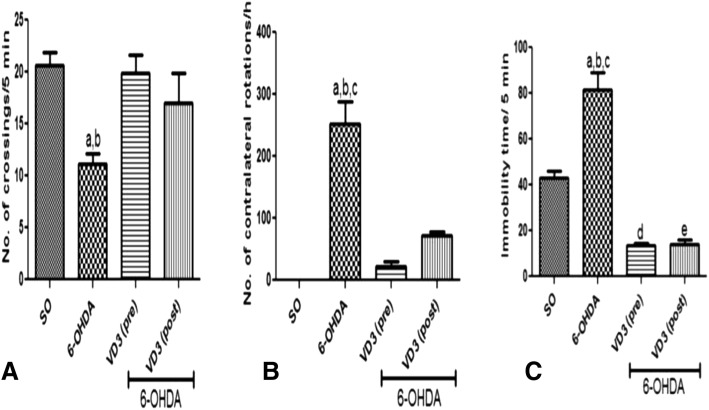Fig. 1.
The pre- and post-treatments with vitamin D (VD3, 1 μg/kg, p.o.) reversed the increased number of crossings (A), the apomorphine-induced circling behavior (B), and the immobility time (C), compared with the non-treated 6-OHDA group. A: a vs. SO, q = 4.608, p < 0.05; b vs. 6-OHDA+VD3 (pre), q = 4.375, p < 0.05. B: a vs. SO, q = 13.53, p < 0.001; b vs. 6-OHDA+VD3 (pre), q = 12.37, p < 0.001; c vs. OHDA+VD3 (post), q = 9.673, p < 0.001. C: a vs. SO, q = 8.873, p < 0.001; b vs. 6-OHDA+VD3 (pre), q = 15.76, p < 0.001; c vs. 6-OHDA+VD3 (post), q = 15.63, p < 0.001; d vs. SO, q = 6.887, p < 0.001; e vs. SO, q = 6.754, p < 0.001 (one-way ANOVA and Tukey as the post hoc test)

